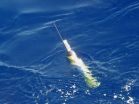(Press-News.org) January 26, 2011 – In a study published online today in Genome Research (www.genome.org), in coordination with the publication of the orangutan genome sequence, scientists have presented the surprising finding that although orangutans and humans are more distantly related, some regions of our genomes are more alike than those of our closest living relative, the chimpanzee.
The fossil record helped to establish evolutionary relationships and estimate divergence times of the primate branch leading to humans, but not until the advent of genome sequencing technology has it been possible to learn more detail about speciation times, genetic and phenotypic divergence times, and the genetic variation present in common ancestor species.
With the addition of the orangutan to the collection of sequenced primate genomes, an international group of scientists led by Mikkel Schierup and Thomas Mailund of Aarhus University in Denmark set out to shed light on these questions in primate evolution. "There remains signals of the distant past in DNA," said Mailund, "and our approach is to use such signals to study the genetics of our ancestors."
When a population "splits", the genetic variation they each inherit from the common ancestor will change over time as the populations diverge, possibly giving rise to two different species. Because humans, chimps, and orangutans all have a common ancestor, it is possible that humans and orangutans may still share genetic variants that were later lost in more closely related primates.
Mailund and colleagues employed a mathematical framework to find regions of the orangutan genome where humans and orangutans are more closely related than humans and chimpanzees as a result of a phenomenon called incomplete lineage sorting (ILS). ILS can reveal information about the time of speciation events, as well as the genetic diversity of the ancestral species.
The study found ILS with orangutan and chimp in approximately 1% of the human genome. "[I]n about 0.5% of our genome, we are closer related to orangutans than we are to chimpanzees," Mailund said, "and in about 0.5%, chimpanzees are closer related to orangutans than us."
Schierup explained that because humans and orangutans split millions of years prior to the human/chimp split, the presence of ILS suggests that the ancestral species of human and chimps maintained high genetic diversity, in contrast to the genetic bottleneck humans are believed to have experienced following divergence from chimps.
As primates along the human lineage diverged, the genetic variation of the common ancestors disappeared long ago and was replaced by new variation. Schierup noted that studies such as this are critical for understanding genetic variation in common ancestors that would be missed by examining population genetics of present day species.
INFORMATION:
Scientists from Aarhus University (Aarhus, Denmark) and the University of Wisconsin (Madison, WI) contributed to this study.
This work was supported by the Danish Natural Sciences Research Council.
Media contacts:
The authors are available for more information by contacting Aarhus University press officers Jens Holbech (holbech@science.au.dk) or Christina Sarjantson (cts@science.au.dk).
Interested reporters may obtain copies of the manuscript from Peggy Calicchia, Editorial Secretary, Genome Research (calicchi@cshl.edu; +1-516-422-4012).
About the article:
The manuscript will be published online ahead of print on January 26, 2011. Its full citation is as follows:
Hobolth A, Dutheil JY, Hawks J, Schierup MH, Mailund T. Incomplete lineage sorting patterns among human, chimpanzee and orangutan suggest recent orangutan speciation and widespread selection. Genome Res doi: 10.1101/gr.114751.110.
About Genome Research:
Launched in 1995, Genome Research (www.genome.org) is an international, continuously published, peer-reviewed journal that focuses on research that provides novel insights into the genome biology of all organisms, including advances in genomic medicine. Among the topics considered by the journal are genome structure and function, comparative genomics, molecular evolution, genome-scale quantitative and population genetics, proteomics, epigenomics, and systems biology. The journal also features exciting gene discoveries and reports of cutting-edge computational biology and high-throughput methodologies.
About Cold Spring Harbor Laboratory Press:
Cold Spring Harbor Laboratory is a private, nonprofit institution in New York that conducts research in cancer and other life sciences and has a variety of educational programs. Its Press, originating in 1933, is the largest of the Laboratory's five education divisions and is a publisher of books, journals, and electronic media for scientists, students, and the general public.
Genome Research issues press releases to highlight significant research studies that are published in the journal.
END
WASHINGTON – Hands-on safety training for workers in highly hazardous jobs is most effective at improving safe work behavior, according to psychologists who analyzed close to 40 years of research. However, less engaging training can be just as effective in preparing workers to avoid accidents when jobs are less dangerous.
More interactive types of safety training may help employees become more aware of the threats they face on the job and avoid making deadly mistakes, according to the findings in the January issue of the Journal of Applied Psychology, which is published ...
To combat last year's Deepwater Horizon oil spill, nearly 800,000 gallons of chemical dispersant were injected directly into the oil and gas flow coming out of the wellhead nearly one mile deep in the Gulf of Mexico. Now, as scientists begin to assess how well the strategy worked at breaking up oil droplets, Woods Hole Oceanographic Institution (WHOI) chemist Elizabeth B. Kujawinski and her colleagues report that a major component of the dispersant itself was contained within an oil-gas-laden plume in the deep ocean and had still not degraded some three months after it ...
Misaligned research, medical challenges and harsh economics are thwarting efforts to slow the destructive course of Alzheimer's disease in the United States, according to a trio of nationally regarded Alzheimer's researchers writing a "Perspective" in Thursday's (Jan. 27) issue of the journal Neuron.
The foremost obstacle is that the most promising preventive strategies are being tested in patients firmly in the grip of Alzheimer's disease — the ones least likely to be helped.
The approach would be similar to testing statins — drugs widely used to prevent heart disease ...
Boulder, CO, USA - LITHOSPHERE articles published in the February issue cover present-day movements and past deformation in El Salvador, Honduras, and Nicaragua; the tectonics of the northern Owens Valley in California, USA; the paleoseismology of the eastern North Anatolian fault at Yaylabeli, Turkey; exhumation in the southeastern Canadian Cordillera; and the diverse tectonic history of Tunisia.
Keywords: Gulf of Fonseca, Central America; Owens Valley, California; North Anatolian fault, Yaylabeli, Turkey, Canadian Cordillera, Canadian Shield, Tunisia.
Highlights ...
A new study into Staphylococcus aureus, the bacterium which is responsible for severe chronic infections worldwide, reveals how bacteria have developed a strategy of hiding within host cells to escape the immune system as well as many antibacterial treatments. The research, published by EMBO Molecular Medicine, demonstrates how 'phenotype switching' enables bacteria to adapt to their environmental conditions, lie dormant inside host cells and become a reservoir for relapsing infections.
Staphylococcus aureus is a major human pathogen which can be carried by up to 70% ...
Some animals produce more offspring than others do. Hormones like prolactin and corticosterone can exercise a crucial influence on the behaviour of birds in the breeding season and therefore on their reproductive success. Scientists from the Max Planck Institute for Ornithology in Radolfzell and their colleagues at the universities of Princeton and Edinburgh have now demonstrated that hormone levels not only play a key role during the breeding season, but already dictate, long in advance, how many eggs a breeding pair will lay, when they will lay them and how often. An ...
Plants producing flower pollen must not leave anything to chance. The model plant thale cress (Arabidopsis), for instance, uses three signalling pathways in concert with partially overlapping functions. The yield becomes the greatest when all three processes are active; however, two are sufficient to form an acceptable quantity of flower pollen. In a new study, Peter Huijser and his colleagues at the Max Planck Institute for Plant Breeding Research in Cologne offer fascinating insights into the rich range of proteins that are used by seed plants to develop stamens and form ...
As many as ten to 20 per cent of nurses and nursing students may have substance abuse and addiction problems, but the key to tackling this difficult issue - and protecting public safety - is support and treatment, not punishment. That is the key message in a paper in the February issue of the Journal of Clinical Nursing.
Researchers have recommended six key points that could be built into alternative-to-dismissal (ATD) strategies after reviewing the latest research and professional guidance from countries such as the USA, Canada, New Zealand, Australia and the UK.
They ...
The temperature of water situated in the subtropical Atlantic experienced a drop of 0.15ºC between 1998 and 2006. This has been revealed by a study led by the IEO (Spanish Oceanography Institute) which suggests that circulation caused by wind could be responsible for this "unusual" behaviour.
Whilst the water temperature in this area, situated along the 24.5º north parallel, from the African coast to the Caribbean, rose by 0.27ºC between 1957 and 1998, researchers have recorded a drop of 0.15ºC in the same area between 1998 and 2006.
"In the ocean there are very ...
'Difficult' patient-clinician encounters have a negative impact on patients' health outcomes in the short-term, according to a new study by Sheri Hinchey from the Tripler Army Medical Centre in Honolulu and Jeffrey Jackson from the Zablocki VA Medical Centre in Milwaukee. Their findings1 show that nearly 18 percent of patients are perceived as difficult by their physicians and are less likely to trust or be satisfied with their doctor. Importantly, these patients are also more likely to report worse symptoms two weeks after the consultation. Hinchey and Jackson's work has ...



